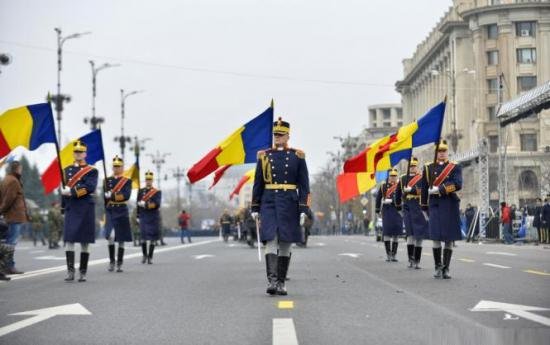The Union Day of January 24, when the Romanian principalities of Wallachia and Moldavia united in 1859 will be celebrated at the Patriarchal Cathedral, in schools and cultural units in the capital on Saturday by a range of events.
Prince Alexandru Ioan Cuza, Metropolitan Bishops Nifon of Wallachia and Sofronie Miclescu of Moldavia as well as other figures who achieved the Union of the Romanian Principalities will be remembered at the Holy Liturgy officiated at the Patriarchal Cathedral on Saturday.
After the Holy Liturgy, there will be officiated a Te Deum 'to thank God for the achievement of this great act in the history of the Romanian people, to the fulfilment of which the Romanian Orthodox Church had an important contribution'.
At 11 a.m. on Saturday, wreaths will be laid at the monument of Prince Alexandru Ioan Cuza, while starting 11:30 a.m. the Holy Synod Hall of the Patriarch's Residence will host a session of scientific reports on 'The Beneficial Consequences of the Union of the Romanian Principalities' organised by the Romanian Patriarch's Office and the Romanian Academy.
The historic moment of the Union of the Romanian Principalities was achieved on January 24, 1856 by the Deputies' Assembly in Bucharest, in a building belonging to the Church, located on the Metropolitan See Hill, where the Patriarchal Palace lies today.
*On January 24, 1859, as a result of the wish of the Romanian people, and in a favorable international context, the political unification of the then two Romanian principalities — Wallachia, today a southern region, and Moldavia, today's eastern region, was achieved under the ruler elect Alexandru Ioan Cuza.
The union of the two principalities, which were under Turkish suzerainty, was back then one of the main desiderata of the Romanian people, alongside winning national freedom. The unification of the two principalities was also the essence of what was used to be called "the Romanian question," which came back to the attention of the big European powers amidst the Crimean War (1853-56).
A genuine unification movement emerged at that time in the two principalities. Concurrently, the Romanian revolutionaries of the 1848 Revolution, self-exiled in Europe's big power countries, played an important part in winning the attention of the European politicians and the public opinion for the unification desideratum of the Romanian people. Political and cultural personalities closely followed this issue developments, voicing support and enthusiasm for the achievement of the unification. The Union of the Romanian Principalities was particularly supported by Emperor Napoleon III of France.
Read the whole article on Agerpres.ro.








